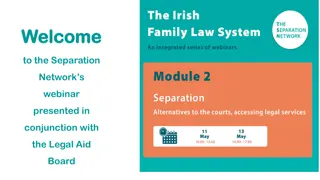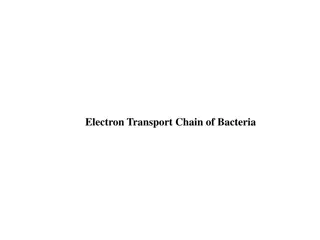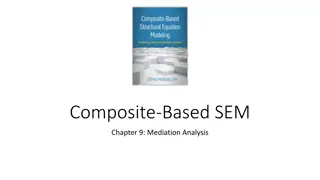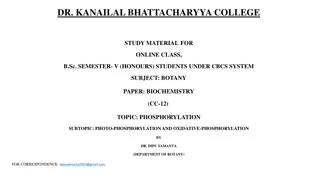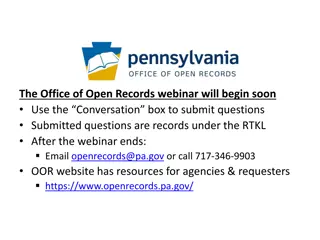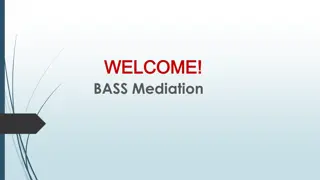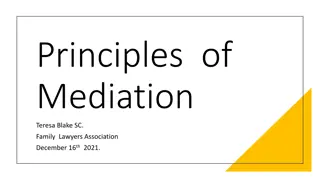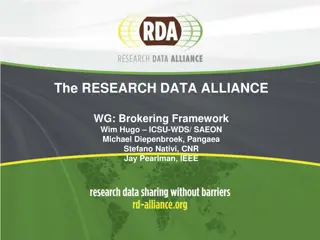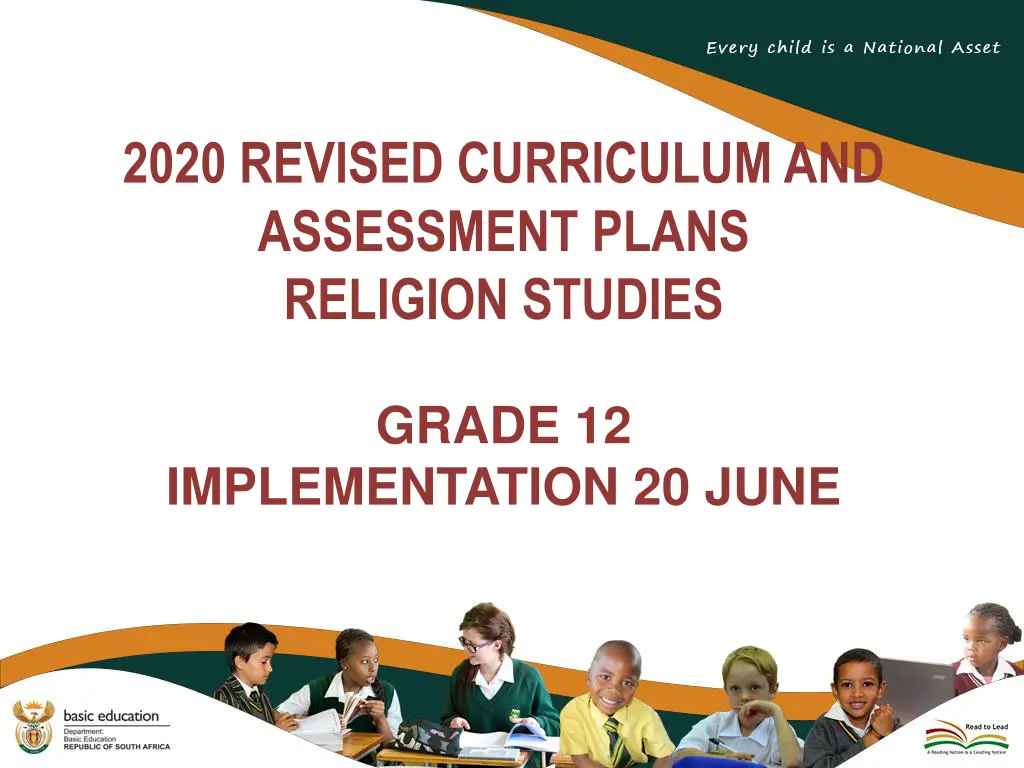
Revised Curriculum and Assessment Plans for Religion Studies Grade 12
Explore the amended 2020 curriculum and assessment plans for Religion Studies Grade 12, including changes to content overview, annual teaching plan, and school-based assessment. Discover the purpose of these amendments and how they aim to enhance teaching and learning outcomes.
Download Presentation

Please find below an Image/Link to download the presentation.
The content on the website is provided AS IS for your information and personal use only. It may not be sold, licensed, or shared on other websites without obtaining consent from the author. If you encounter any issues during the download, it is possible that the publisher has removed the file from their server.
You are allowed to download the files provided on this website for personal or commercial use, subject to the condition that they are used lawfully. All files are the property of their respective owners.
The content on the website is provided AS IS for your information and personal use only. It may not be sold, licensed, or shared on other websites without obtaining consent from the author.
E N D
Presentation Transcript
2020 REVISED CURRICULUM AND ASSESSMENT PLANS RELIGION STUDIES GRADE 12 IMPLEMENTATION 20 JUNE
Presentation Outline 1.Purpose 2.Amendments to the Content Overview for the Phase; 3.Amendments to the Annual Teaching Plan; 4.Amendments School Based Assessment (SBA) 5.Conclusion
1. Purpose To mediate the amendments of the trimmed and re-organised 2020 Annual Teaching Plan including School Based Assessment for Religion Studies, Grade 10 for implementation in June 2020 as stipulated in Circular S2 of 2020. To ensure that meaningful teaching proceeds during the remaining teaching time as per the revised school calendar. To assist teachers with guided pacing and sequencing of curriculum content and assessment.
1. Purpose (continued) To enable teachers to cover the essential core content /skills in each grade within the available time. To assist teachers with planning for the different forms of assessment. To ensure learners are adequately prepared for the subsequent year/s in terms of content, skills, knowledge, attitudes and values
2. Amendments to the Content Overview for the Phase
SUMMARY: AMENDMENTS TO THE CONTENT OVERVIEW FOR THE PHASE RS GRADE 12 TOPIC GRADE 10 GRADE 11 GRADE 12 1. Variety of religions Various clusters of religions The beginnings of the religions of the world The nature of the religions in South Africa Statistical spread of religions Interaction of religions (Reduced ) Main developments of religions The mutual interdependence of religion (Clustered topics) and social factors Influence and adaptation between religions Important concepts Approaches aimed at interreligious dialogue Conceptual distinctions Internal differentiations within religions Main features of such differentiations Unique features of various religions History and present dynamics of inter-religious relationships 2. Common features of religion as a generic and unique phenomen on Definitions of religion Aspects of understanding religion Major dimensions common to all religions Origins of religions Roles of social forms, institutions and roles in religion Social forms that have been produced in various religions Leadership roles produced in various religions Reduced number examples Symbols Theories about religion The nature and role of narrative and myth in religion Types of rituals and their role in religions Concepts: faith, meditation, mysticism, and the artistic religion Reduced number of concepts Religious teachings The central teachings in one religion Normative sources religions Interpreting one normative source Analysis of secular worldviews The origin, purpose and influencing factors behind worldviews in various worship, prayer, spirituality at least two expression of
SUMMARY: RS AMENDMENTS TO THE CONTENT OVERVIEW FOR THE PHASE Topic GRADE 10 GRADE 11 GRADE 12 3. Topical issues in South Africa Topical issues in Africa and the world Removed the world Principles of ethical decision-making pertaining to public life Religions and economics Critical analysis of the relationship between religions and economics Religion and the state How religious beliefs influence the development of state policies and practices Removed some of the beliefs Religion and politics Religions and the natural environment Co-responsibility and cooperation of religions Developing a strategy to solve a major social problem Role of media in influencing public opinion on religion Religious freedom, human rights and responsibilities Topical issues in society 4. Important research Studies Rituals Inter-religious relationships principles in of Interviews on gender issues. Reduced number issues Relaxation and leisure from an ethical point of view Research and religions into Religion across Religion in areas of conflict in South Africa, Africa and the world Religion and sciences the natural
3. Amendments to the Annual Teaching Plan
Summary: Revised ATP Grade 12 Term 2 Term 3 Term 4 Variety of religions Common features of religion as a generic and unique phenomenon Interpreting one normative source: Topical issues in society Consolidation of work: Conceptual distinctions Internal differentiations Unique features of various religions Roles of various religions History and present dynamics of inter- religious relationships in South Africa The hermeneutical principles of interpreting the normative sources in any one religion Actual interpretation of one important normative source in any one religion: African oral and written tradition, the Bible, the Quran, the Tanach, the Vedas, the Kita-i- Aqdas and the Pali Canon Development of a strategy to solve a major social problem: Main elements: Identifying and analysing the problem, Outlining and considering the religious sources available,Outlining practical steps to be taken to reach a solution Common features of religion as a generic and unique phenomenon Analysis of secular worldviews with reference to the definition of religion and universal dimensions of religion: Topical issues in society Topical issues in society Consolidation of work: Religious freedom, human rights and responsibilities Social problems in South Africa and the world Media coverage on issues with religious coverage Specialisation in one religion: Role of media in influencing public opinion on religion , Religious issues reported on in atheism, agnosticism, humanism and materialism the media , The different media presenting information on religion Link between distinct media and different religions The origin, purpose and influencing factors behind at least two worldviews Message conveyed about religion in the various media and how this influences public opinion Specialisationin one religion
Summary: Revised ATP Grade 12 Term 2 Common features of religion as a generic and unique phenomenon Religious teachings: a variety of their roles in different religions: The difference between the concept ideology of teaching and the concepts of belief, doctrine, dogma, parable, myth and ideology Term 3 Research into and across religions Term 4 Research into and across religions Religion and the natural sciences: Consolidation of work: Examine the relationship between religion and the natural sciences with reference Religion in areas of recent conflict in South Africa and the world Religion and the natural sciences Topical issues in society Common features of religion as a generic and unique phenomenon Consolidation of work: Common features of religion as a generic and unique phenomenon Religious freedom, human rights and responsibilities: Specialisation in one religion: The central teachings in one religion: The role of teaching in a variety of religions Interpreting normative sources The central teachings of one religion Sources available in different religions pertaining to religious freedom, human rights and responsibilities Religious teachings pertaining to morality and ethics in modern society Core teachings including the following component the nature of divinity, the nature of the world, the nature of humanity with reference to community and the individual, the place and responsibility of humanity in the world, the origin and the role of evil, the overcoming of evil, life after death.
Summary: Revised ATP Grade 12 Term 2 Common features of religion as a generic and unique phenomenon Term 3 Term 4 Topical issues in society Practical involvement of different religions in promoting religious freedom, human rights and responsibilities Normative sources in various religions: Occurrence of the following normative sources in several religions: contemporary inspiration, oral tradition and sacred books The origin and development of normative sources in different religions
4. Amendments School Based Assessment (SBA)
PROGRAMME OF ASSESSMENT GRADE 12 MARKS YEAR % Ter Assessment task Recording m Reporting Written task 1 100 100 Test 2 300/3 Project or Task 100 100% 3 100 Trial Examination School-based 100 100 25% Assessment (SBA) End-of-year 300 75% 4 examination 100% Total for end of year 400
CONCLUSION AMMENDEMENT FOR COVID 19 1.Amendments to the Content Overview for the Phase: NO CONTENT CHANGE 2.Amendments to the Annual Teaching Plan; 3.Amendments School Based Assessment (SBA)
Contact Details Name: CES: Subjects Dr K Perumal Department of Basic Education Tel: 012 357 4257 /0843012514 Email: Perumal.K@dbe.gov.za




